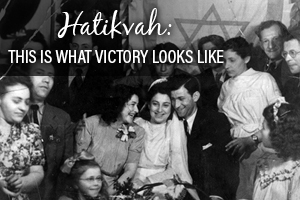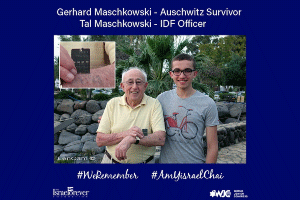A sapling from Anne Frank’s chestnut tree grows at Yad Vashem
by Gil Zohar
Jerusalem and its environs have many historic trees, including the grove of gnarled olives in the Garden of Gethsemane – under which Jesus may have sheltered two millennia ago. But now Jerusalem has a new contender – a sapling seeded by Anne Frank’s white horse chestnut tree in Amsterdam, which is growing at Yad Vashem near its International Institute for Holocaust Research.
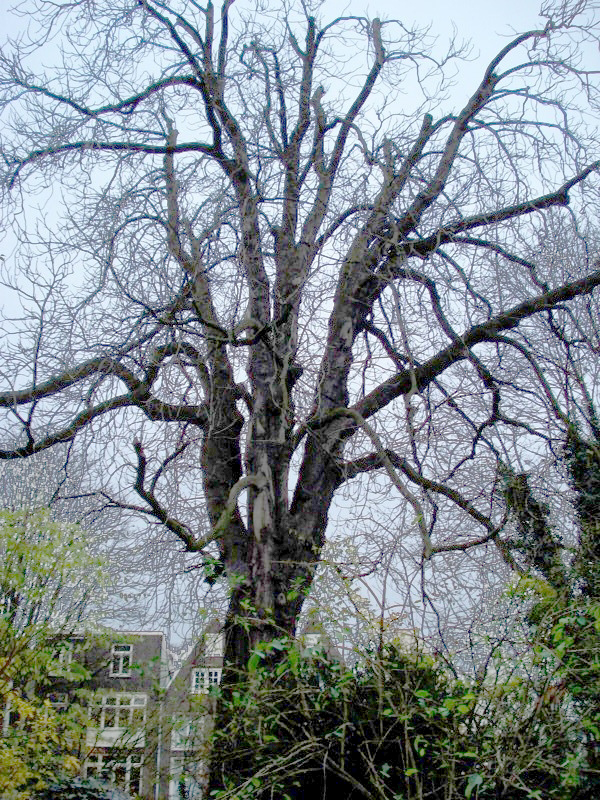
Annefranktree by huliana90212 distributed under a CC BY 2.0 license
For more than two years until her arrest on August 4, 1944, Frank – a precocious Jewish teenage diarist (1929-1945), hid in her family’s secret annex at Prinsengracht 263-265. Through a window in the attic that was not blacked out, she admired the majestic chestnut tree, planted c. 1850, that stood in the courtyard of a neighboring residential block at 188 Keizersgracht just north of the landmark Westerkerk.
The tree was her only connection to the outside world and the changing seasons.
Frank wrote about the tree three times in her diary. On the last occasion, on May 13, 1944, she observed: “Our chestnut tree is in full bloom. It’s covered with leaves and is even more beautiful than last year.”
A month earlier on April 18, 1944, she wrote: “April is glorious, not too hot and not too cold, with occasional light showers. Our chestnut tree is in leaf, and here and there you can already see a few small blossoms.”
The first reference was on February 23, 1944, when Frank noted: “The two of us [Peter van Pels and Frank] looked out at the blue sky, the bare chestnut tree glistening with dew, the seagulls and other birds glinting with silver as they swooped through the air, and we were so moved and entranced that we couldn’t speak.”
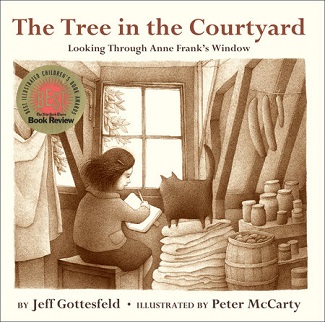
A children’s book for ages 4 to 8, The Tree in the Courtyard by Jeff Gotttesfeld, anthropomorphized the tree to tell youngsters about Anne Frank. In this beautifully told and illustrated story, the tree “which loved the sight of her,” watches over Anne and the other hidden Jews through the attic window. After the war, the story goes, the tree lived on but was never the same.
For decades the storied chestnut tree was cared for by Amsterdam’s Pius Floris Tree Care at the behest of the city’s Central Borough Council.
In 2005 it was determined that the historic chestnut tree was ailing, and valiant efforts were made to save it. The Anne Frank House asked permission of the owner of the tree to gather and germinate chestnuts. The saplings, grown and cared for by Bonte Hoek Nurseries, were donated to schools around the world named after Anne Frank, and other organizations. In 2009, 150 saplings of the tree were donated to the Amsterdamse Bos woodland park.
Avner Shalev, Chairman of Yad Vashem, plants the sapling. Photo Credit- Yad Vashem
Initially, Yad Vashem was concerned the chestnut tree planted in 2012 would not acclimate to Jerusalem’s long, dry summers. But the tree today is doing well.
Hanna Pick, Holocaust survivor and childhood friend of Anne Frank, waters the sapling. Photo Credit- Yad Vashem
Besides Jerusalem, a sapling was recently planted in Vienna’s 2nd district – a neighborhood with many Jewish residents before the 1938 Anschluss. Another was planted in Ajaccio, Corsica to honor a Righteous Among the Nations there. Eleven chestnut trees are growing in the United States including one at Manhattan’s Liberty Park commemorating 9/11, thanks to the sapling project of the New York-based The Anne Frank Center for Mutual Respect.
In 2008 the Support Anne Frank Tree foundation placed iron struts to prop up the tree in the hope it would remain standing for further decades. But the tree was already too rotten. During a violent rainstorm on August 23, 2010, it collapsed together with the girders supporting it, leaving a one-meter high stump. Fortunately, no one was injured.
In its website, the Dutch-based foundation responds to the question, was the battle to save the tree all for nothing?
“The answer is a resounding no!
“The tree and the struggle to preserve it in the last two years has fulfilled an important task in an extraordinary manner: The reawakening of the worlds’ collective memory of the Holocaust and a call for tolerance and mutual respect. The seedlings planted all over the world will continue to spread the message, a grand and dignified final stage in the life of this tree. This would not have happened were it not for the battle for its preservation.”
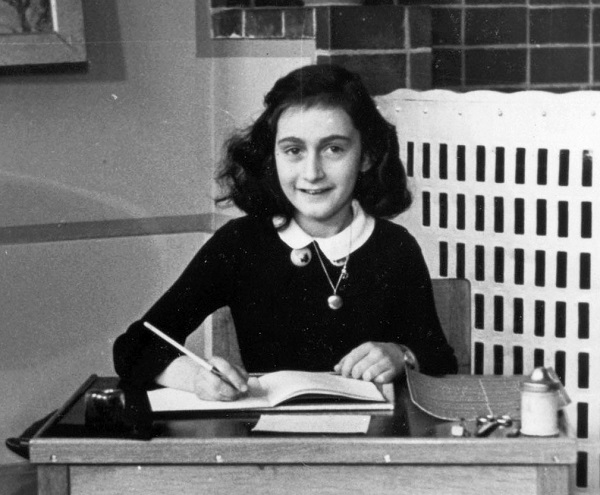
As Anne Frank’s wisdom lives on in the words of her diary, the trees continue to provide lasting symbols of life and hope - even after the original tree and the girl who admired it when there was little else to admire, are gone.
DISCUSSION QUESTIONS:
- Who was Anne Frank? What made her special?
- Why is Anne Frank’s tree important?
- Why does it matter where the sapling trees are planted? Why is it important that a tree is growing in Yad Vashem and not just the other locations in Europe?
- What does the tree teach us about living on after terrible things happen?
- Today, BDS and other anti-Israel activists are attempting to appropriate Anne Frank as a symbol for resistance against occupation and oppression (see here for example). Comparisons are being made between her experiences and those of Gazan children. She has also been compared to Ahed Tamimi.
What do you think motivates this?
Why would these activists wish to use a Jewish girl, who became famous for her writings about the plight of the Jewish people and was ultimately murdered for being Jewish, as a symbol in their efforts against the Jewish State?

Gil Zohar was born in Toronto, Canada and moved to Jerusalem in 1982. He is a journalist writing for The Jerusalem Post, Segula magazine, and other publications. As well, he’s a professional tour guide who likes to weave together the Holy Land’s multiple narratives. Gil wrote 100 pages of Fodor’s Guide to Israel (7th edition, 2009), six books in the “Voices From Israel” series (Mitchell Lane, Delaware, 2016) and has written promotional material for Israel’s Ministry of Tourism. He can be reached at GilZohar@rogers.com or +011 972 (0)524 817 482. For more information see www.GilZohar.ca.

